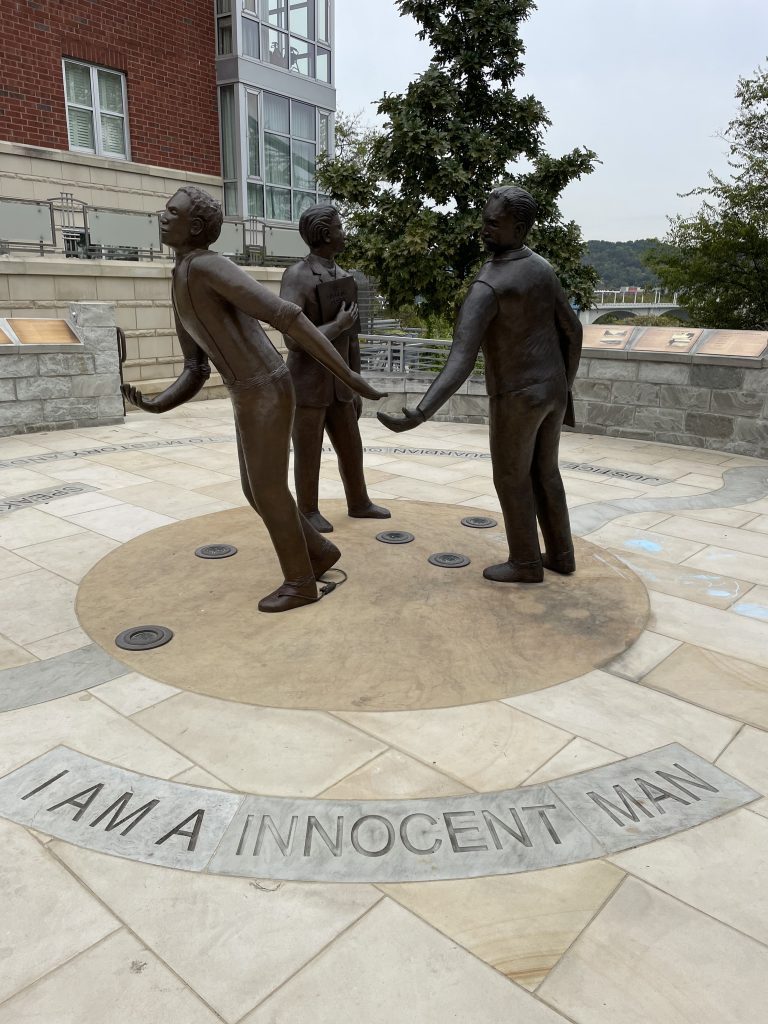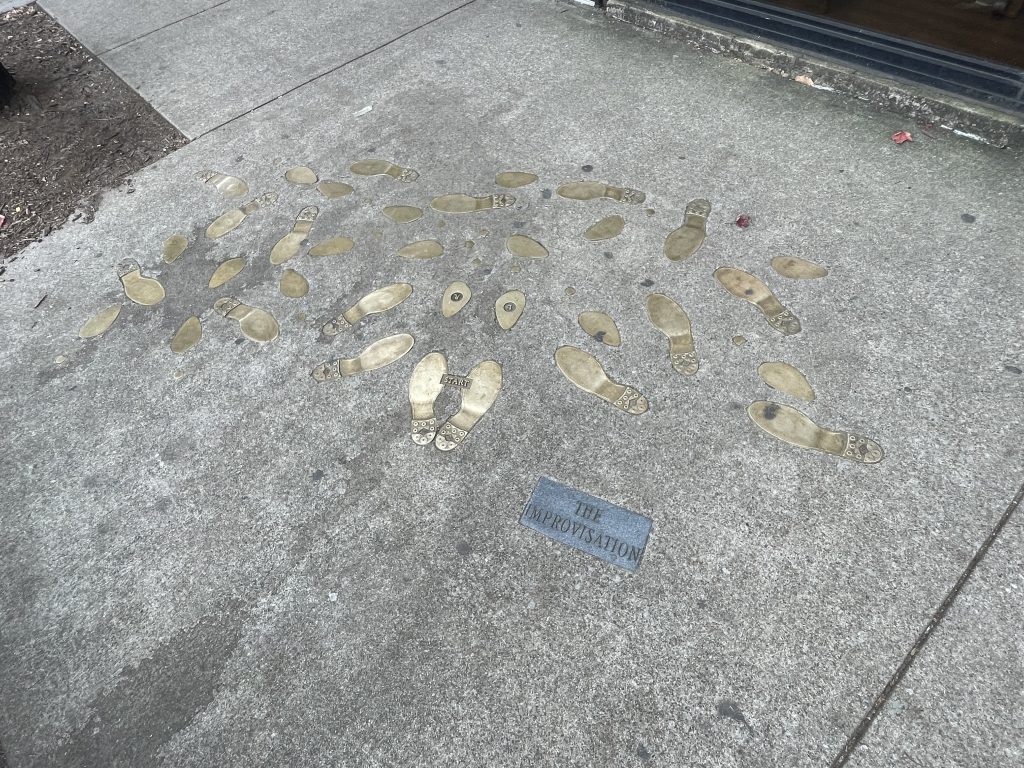First, can we just take a moment to appreciate the number of double letters in “Chattanooga, Tennessee”? I mean, it’s really something.
Chattanooga sits along the Tennessee River, just above Georgia, nestled in the foothills of the Appalachian Mountains. It is the fourth largest city in Tennessee, and was an important city for the Confederate Army during the Civil War due to the many railroads that converged on the city.
The city is internationally known thanks to Glenn Miller’s 1941 hit song Chattanooga Choo Choo, which was also featured in the movie Sun Valley Serenade#AD. It also has a much sadder history in that it was one of the internment camps used for Native Americans before they began their journey westward on the Trail of Tears.

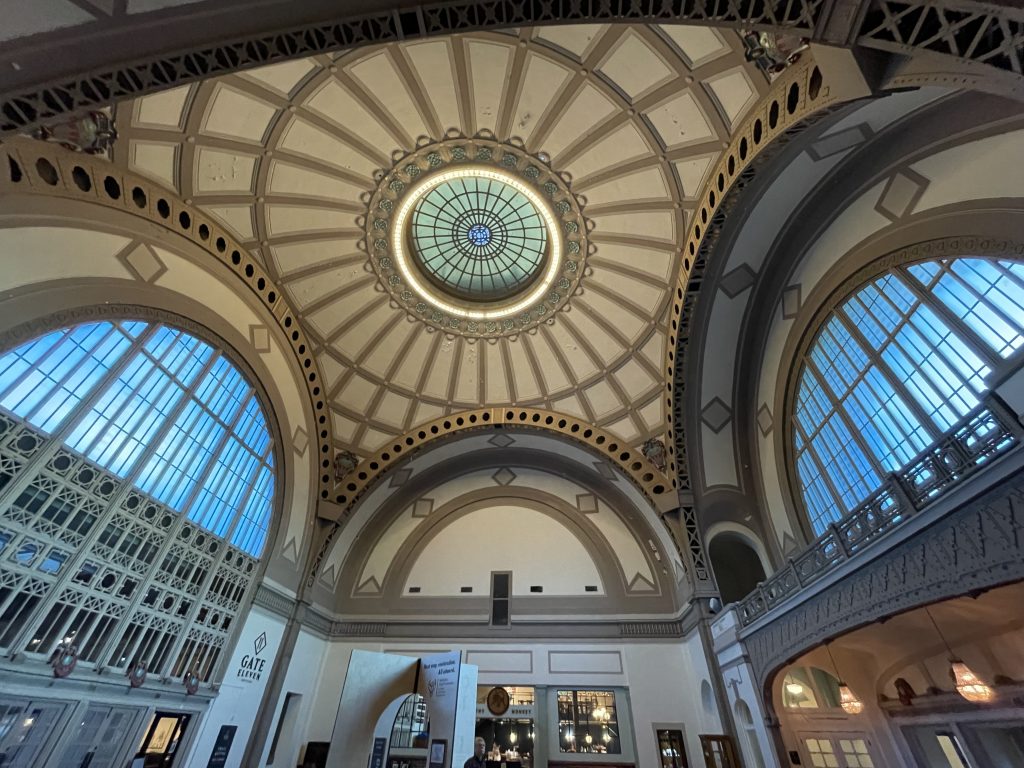
In 1909, the Beaux Arts style Terminal Station opened in Chattanooga, a major hub for industrial and passenger railway service. At its peak it served nearly 50 passenger trains a day, but as automobiles became more popular, passenger trains declined in usage, and by the 1960s only two train lines remained. The station was closed in 1970, destined for demolition.
But a group of investors inspired by the Glenn Miller song renovated the building and opened it as a “unique vacation complex” in 1973. The Chattanooga Choo Choo Hotel is still in business today (under new management), offering stays in traditional hotel rooms but also in Pullman Train Cars. It also has restaurants, bars, music venues, a comedy club, retail outlets, and more.
In 1954, the McKees purchased a bakery in Chattanooga that they later renamed to the McKee Baking Company. In 1960 the company launched something not seen before: a “family pack.” It was a carton with individually wrapped cakes that sold for less than if the cakes had been bought separately. The branding on the family pack was “Little Debbie,” named for a granddaughter, and featuring her likeness, too. Oops – Debbie’s parents discovered their daughter’s face would be featured on the packaging when the first cartons were rolling off the assembly line.
The top-selling Little Debbie varieties are Oatmeal Creme Pies, Swiss Cake Rolls, and Nutty Buddy Wafer Bars. The company sells more than 200 million cartons of these three every year, and nearly one billion cartons of all the product lines!
It’s been a long while since I’ve had Little Debbie, and I was pleasantly surprised how tasty they were, especially the Nutty Buddy, which has been in production since 1964.
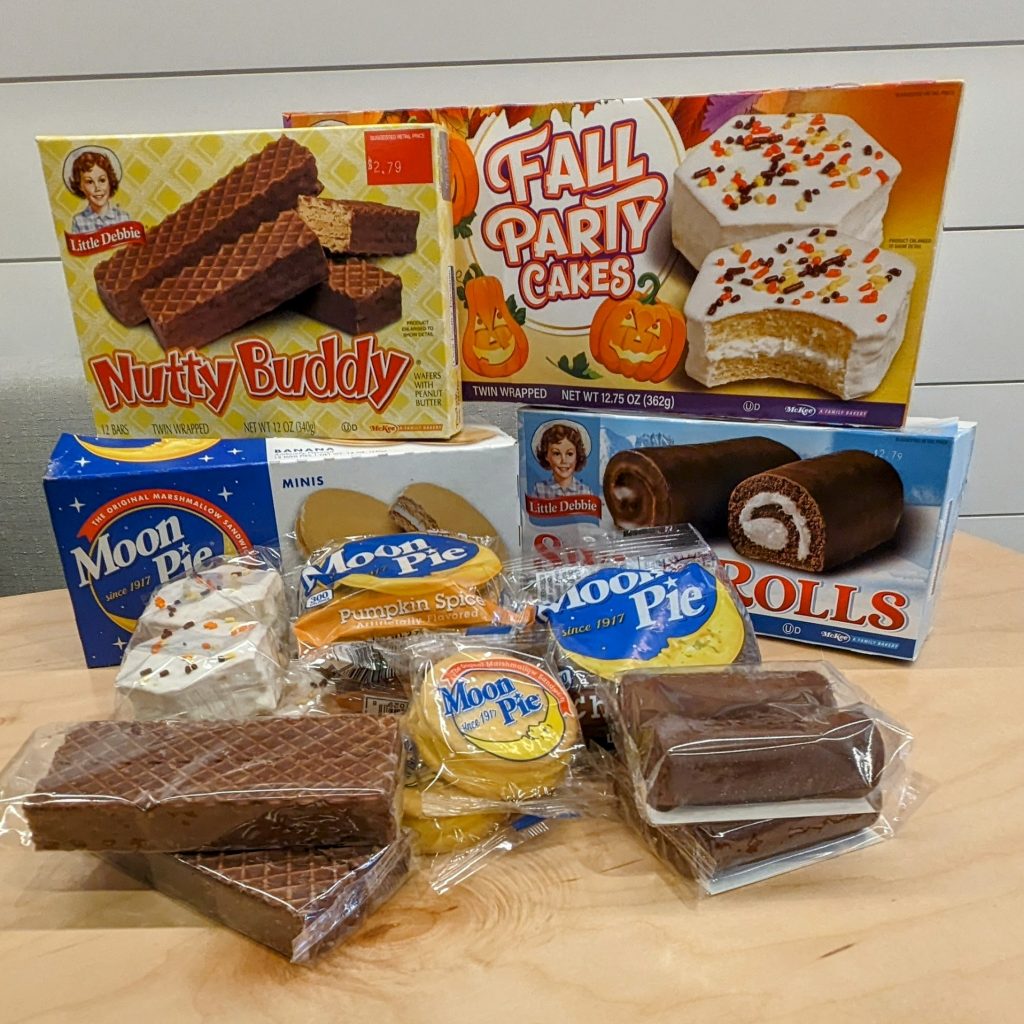
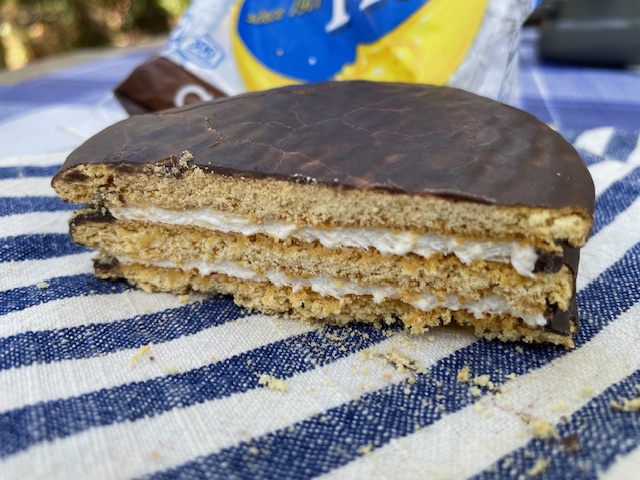
And then there’s the Moon Pie. Made by the Chattanooga Bakery, Inc., they go all the way back to 1917, and they taste like it, too. Somehow, incredibly, the company currently produces about a million Moon Pies per day!
Reading the history on their website, it’s described as a “filling and wholesome snack” and, honestly, I thought there were truth in advertising laws. Wikipedia describes the snack as “two round graham cookies, with marshmallow filling in the center, dipped in a flavored coating.” The five primary flavors are chocolate, vanilla, banana, strawberry, and salted caramel.
While I normally love a sugar-laden snack, I have to say the Moon Pie was oddly reminiscent of cardboard and we gave them away.
Krystal is a fast food restaurant that started in Chattanooga in 1932. It’s known for its small square hamburgers (sliders) on steamed buns, which may sound suspiciously like White Castle, which predates this chain. Mr. Burger Doug of course wanted to try them (there was nothing on the menu for me at all!), and he declared them delicious. I thought the burger-to-bun ratio looked ridiculous.
Apparently Joey Chestnut thinks they’re delightful, too, as he has set a competitive eating record of 103 Krystal hamburgers in eight minutes in 2007!
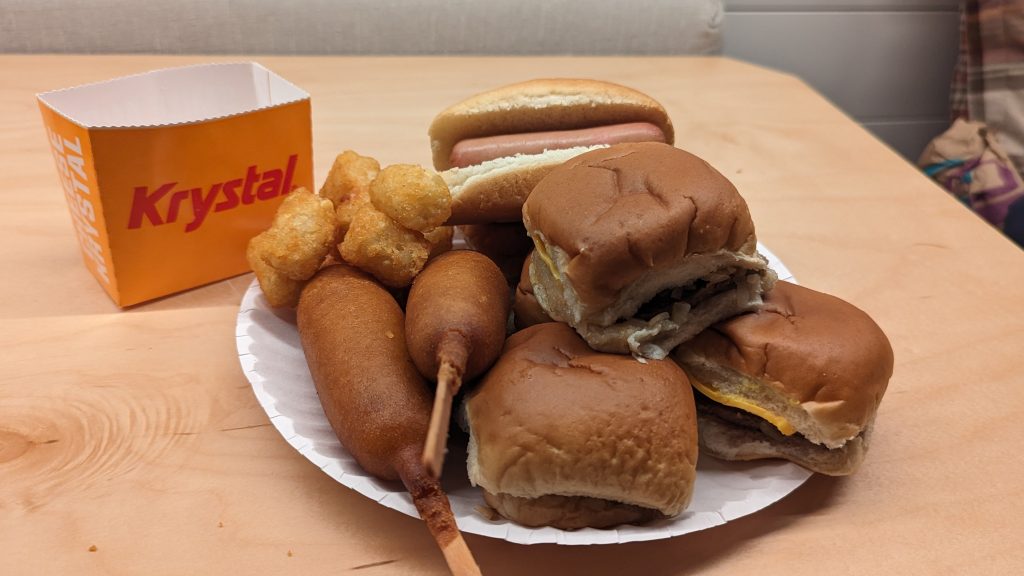
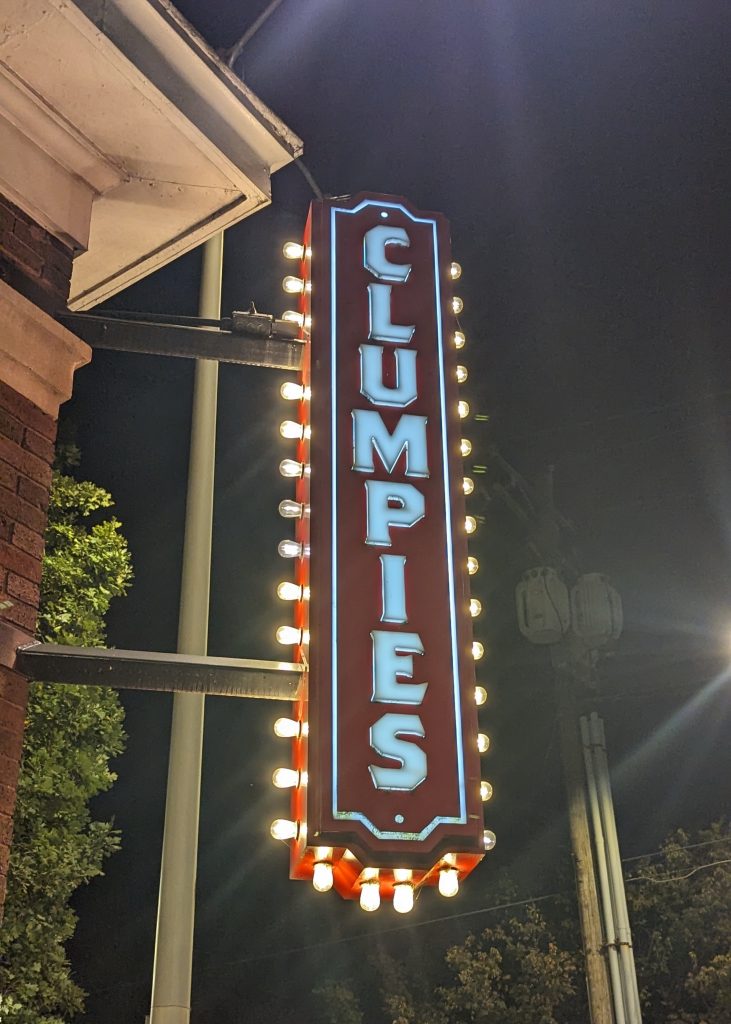
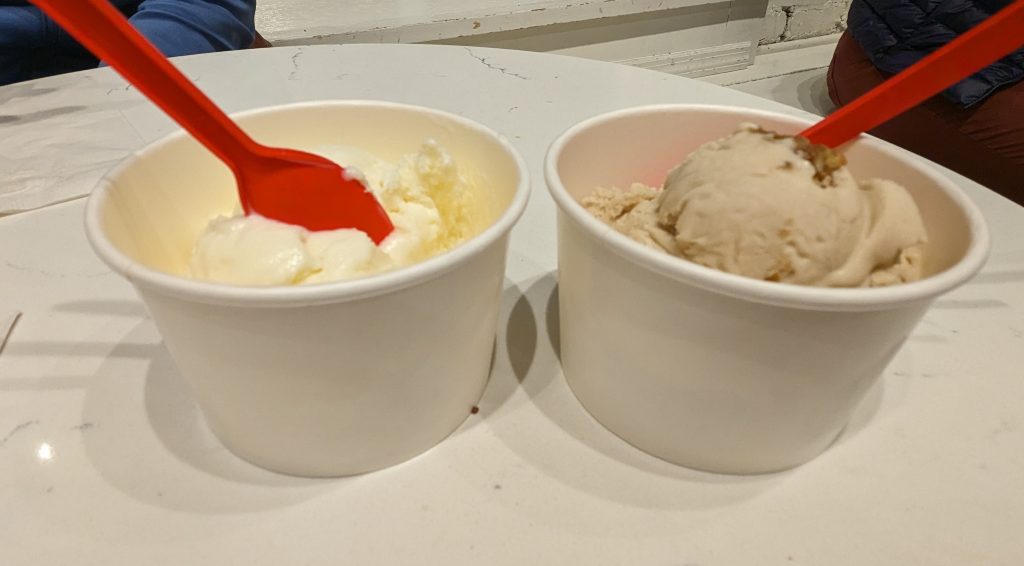
Clumpies has been selling handcrafted ice cream in Chattanooga since 1999. In an unusual twist, I was willing to pass on ice cream, but Doug was in his post-whiskey-tour-happy-place and thought it was a good idea. To be fair, I didn’t require a lot of convincing. It was quite good!

The Walnut Street Bridge is one of the longest pedestrian bridges in the world at nearly half a mile. Built in 1890, it was the first non-military bridge across the Tennessee River. We walked across and back after visiting the Hunter Museum of American Art, which you can just see on the right.
The bridge has a dark history. In 1893 Alfred Blount was lynched from the first span for allegedly attacking a white woman, and in 1906 Ed Johnson was lynched from the second span for the same alleged crime. Johnson was granted a stay of execution by the US Supreme Court (the first African American to receive one), but a local mob took “justice” into their own hands. Outrage ensued, and a handful of the perpetrators were actually found guilty.
